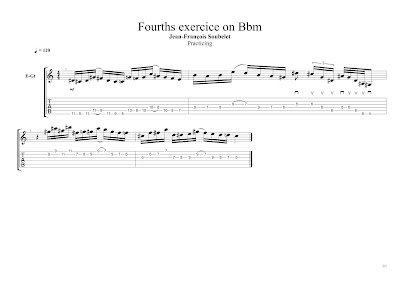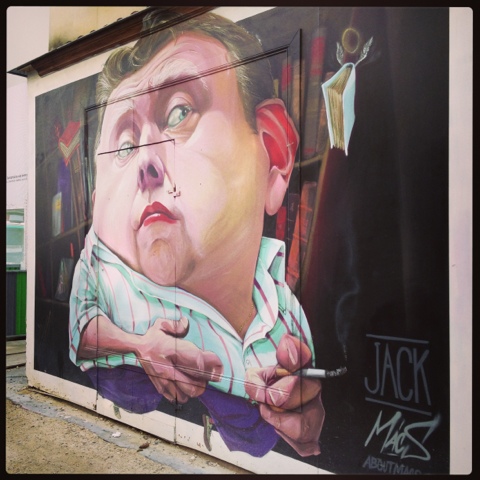Hi !
Today I'm starting a serie of exercices on a subject that is dear to me in improvisation and practicing: patterns.
Lately I've talked about motives in improvisation, stressing out a rhythmic approach.
Here we'll focus on choice of notes, intervals and modes. Since we'll be in a practicing mood, rhythm will be restricted to plain sixtenth-notes.
The purpose of this blog entry is twofold:
- Step 1: to show how to take a simple 8-note pattern then to develop the idea as far as possible.
- Step 2: to transpose a pattern in different ways with modulations.
( fig. 1 ) shows the basic idea: a 8-note pattern in A minor pentatonic. I stole this idea from Michael Brecker lines and from Paul Gilbert killer rock licks, mixing strict alternate picking and hammer-ons and pull-offs. With accents carefully chosen at high speed and with this pattern developped all along A minor pentatonic scale, this simple lick can be really effective in a hot improvisation.
Now let move to C minor pentatonic and let blend with F# minor pentatonic (b5 transposition) to bring in some "out-phrasing atmosphere". In ( fig. 2 ) this modulation is performed in the same area of the neck, the pattern is transposed every 8 notes. The basic idea of the ( fig. 1 ) pattern is underlying all the way.
( fig. 3 ) takes the basic pattern further up the road of modulation. Now we're in C augmented scale, with the same pattern contour and accents. If we step back for a while, we notice many common grounds between ( fig. 1 ) and ( fig. 3 ). This is the same damn idea, transposed in another scale.
( fig. 4 ) brings some kind of Oz Noy touch with the introduction of the whole tone scale. Oz is fond of this scale and uses it in a very clever and subtle way.
Basically, we only take the first ascending part of the original pattern, then we basically go down with the C whole tone scale.
After playing ( fig. 4 ), you notice 2 things:
- we start the idea on an E, then on a C, then G#, E, and C
- we come up with a pattern transposed according to the C augmented triad.
After hours of practicing I've noticed this pattern transposition approach being really effective to practice muscles, rhythmic endurance, modes and picking accuracy.
We'll see later on how to apply this approach on modes and arpeggios, vertically and horizontally on the neck.
Shred on
Jean-François
Don't hesitate to drop a line below, or on Facebook or Twitter to let me know about your thoughts on this blog post. That would be really helpful for me. THANKS !

.jpg)










.jpg)

.jpg)

.jpg)

.jpg)

.jpg)






























